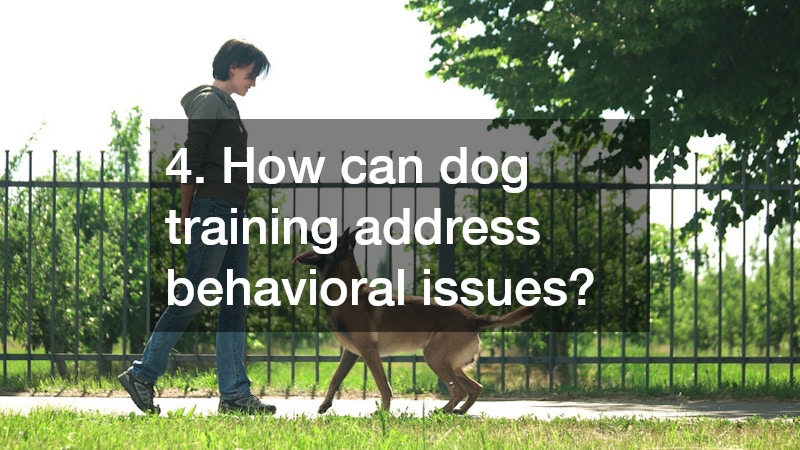Dog training is a crucial aspect of pet ownership that significantly impacts both the owner and the pet. Understanding its importance can lead to a more enjoyable and harmonious relationship between dogs and their humans.
1. What are the benefits of enrolling my dog in a training school?
1.1 Enhancing Obedience and Manners
Training schools help in establishing basic obedience, ensuring that dogs understand simple commands like sit, stay, and come. Good manners learned at these institutions make the dog enjoyable to be around, both at home and in public spaces.
This foundation of obedience not only makes everyday life easier for owners but also contributes to the safety of the dog. When a dog can reliably follow commands, it can avoid dangerous situations and respond calmly in challenging circumstances.
Moreover, obedience training can be particularly useful in managing unwanted behaviors, such as jumping on guests or pulling on the leash during walks. Addressing these issues through structured lessons can greatly improve the quality of life for both dogs and their owners.
1.2 Building a Stronger Bond
Enrolling your dog in a training school can significantly improve the bond between you and your pet. Training sessions provide structured opportunities for you to interact with your dog, enhancing mutual understanding and trust.
The process of working together on commands and activities enables better communication and cooperation. As you become more skilled in guiding your dog, your dog becomes more attuned to your cues, resulting in a deeper connection.
Furthermore, a well-trained dog is often more confident and secure, which can lead to a happier home environment. This mutual trust and respect fostered during training can form the basis of a lasting relationship.
2. How does dog training improve my pet’s social skills?
2.1 Interaction with Other Dogs
Dog training schools provide a controlled environment where pets can safely interact with other dogs. This socialization is crucial in helping your dog learn appropriate play behaviors and communication skills.
Regular interaction with different dogs can reduce fear and aggression, common issues that arise from a lack of social exposure. With time, your dog can become more comfortable with new canine companions, making outings more enjoyable and stress-free.
Additionally, these interactions can teach your dog important social cues, helping them understand boundaries and signals from other dogs. As a result, you can feel more confident when introducing your dog to new situations and playgroups.
2.2 Adaptability in New Environments
Training schools often expose dogs to a variety of settings, helping them become adaptable and resilient. Adapting to new environments reduces anxiety and helps dogs remain calm during unexpected events or changes in routine.
Your pet’s adaptability can be beneficial during travel, vet visits, and when exploring new places. When a dog feels comfortable in different scenarios, it contributes to their overall sense of well-being and confidence.
Moreover, adaptable dogs are also easier to manage, as they can handle unfamiliar territory without stress or disruptive behavior. This capability enhances their ability to integrate seamlessly into diverse aspects of your life.
3. What types of dog training programs are available?
3.1 Basic Obedience Classes
Basic obedience classes lay the groundwork for a harmonious relationship between you and your dog. These programs typically cover essential commands such as sit, stay, and heel, ensuring that your dog has a reliable response in various situations.
By starting with foundational courses, pet owners can address and correct potential behavioral problems early on. This proactive approach can prevent more serious issues from developing and ensure that your dog enjoys a well-rounded education.
Furthermore, mastering basic obedience can instill a sense of accomplishment in both the owner and the dog. This initial success motivates continued learning and builds a strong foundation for more advanced training.
3.2 Specialty Training Courses
For dogs with specific behavioral issues or advanced training needs, specialty courses offer targeted solutions. These programs include various disciplines such as agility training, therapy dog preparation, and advanced obedience skills.
Specialty courses cater to unique challenges and requirements, allowing for a more personalized approach to training. Whether addressing severe anxiety, aggression, or preparing for competitive events, these classes provide the tools to succeed.
By participating in specialized courses, dogs can develop refined skills and behaviors tailored to their individual needs. This targeted training builds upon the knowledge gained from basic obedience classes, offering owners and pets a higher degree of proficiency.
4. How can dog training address behavioral issues?
4.1 Identifying and Correcting Unwanted Behaviors
The structured environment of a training school is ideal for identifying and addressing undesirable behaviors in dogs. Through professional guidance, owners learn to recognize the root causes of issues such as excessive barking, chewing, or aggression.
Once problems are identified, trainers employ specific techniques to correct unwanted behaviors, tailoring strategies to each dog’s unique situation. This individualized attention ensures the most effective methods are used to bring about positive change.
Addressing behavioral issues with expert help can lead to more harmonious living arrangements and enhance the overall quality of life. Additionally, correcting these challenges with professional support emphasizes the importance of patience and understanding.
4.2 Promoting Positive Reinforcement
Positive reinforcement is a cornerstone of modern dog training, focusing on rewarding desired behaviors instead of punishing unwanted ones. This approach builds a strong foundation of trust and encourages dogs to repeat good behaviors willingly.
Through consistent application of positive reinforcement techniques, owners can cultivate an environment where dogs feel motivated and enthusiastic about learning. This positive atmosphere fosters a more open and receptive attitude towards training, for dogs and owners alike.
Furthermore, positive reinforcement is more effective in bringing about lasting behavior change than traditional punitive methods. The benefits of this approach go beyond improved behavior, contributing to a happier and more emotionally secure pet.


